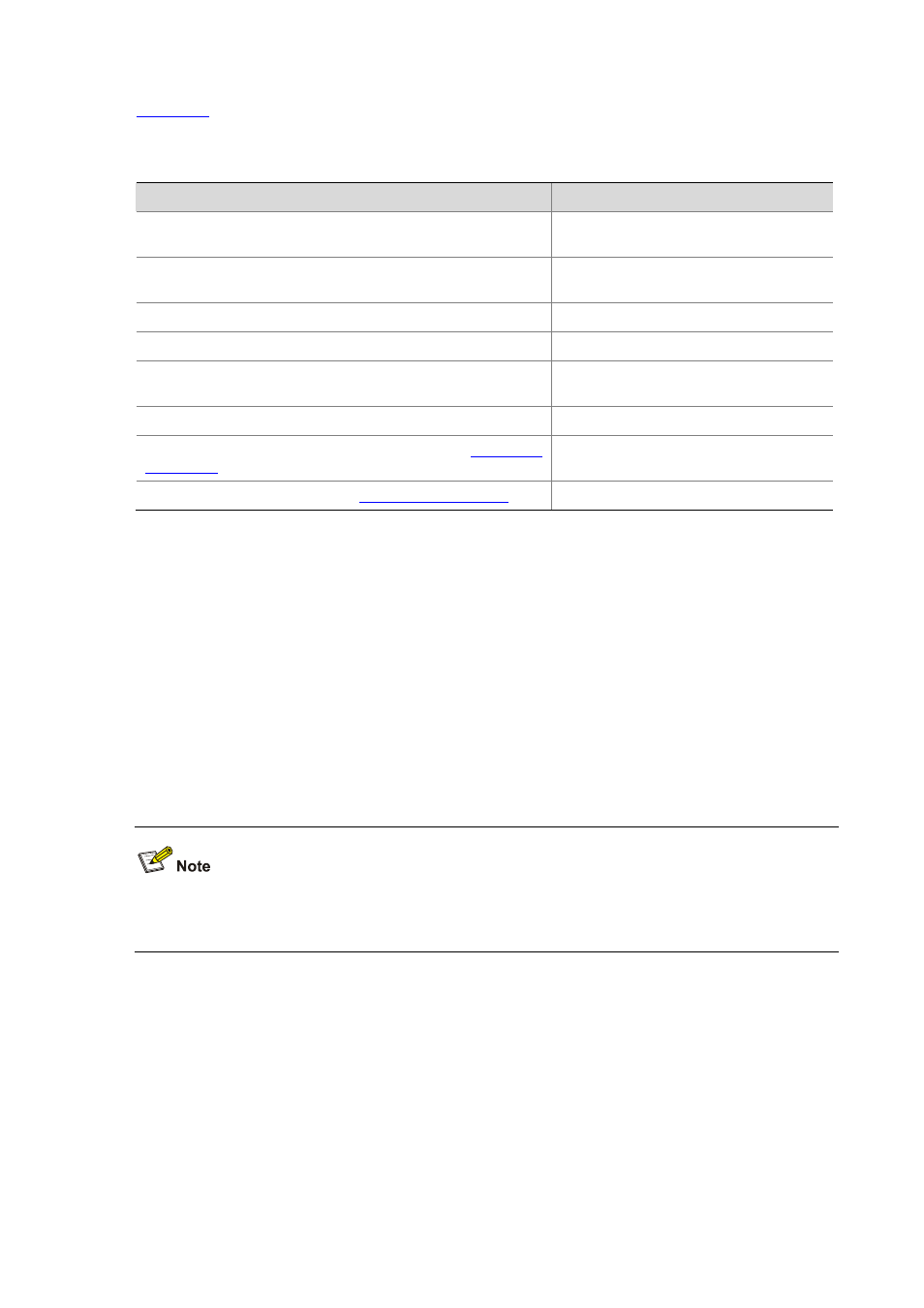H3C Technologies H3C WX6000 Series Access Controllers User Manual
Page 138

11-3
describes the monitored elements and the NQA test types in which the elements can be
monitored.
Table 11-1 Monitored elements and NQA test types
Monitored elements
Test type supported
Probe duration
Tests excluding UDP jitter test and voice
test
Count of probe failures
Tests excluding UDP jitter test and voice
test
Packet round-trip time
UDP jitter test and voice test
Count of discarded packets
UDP jitter test and voice test
One-way delay jitter (source-to-destination and
destination-to-source)
UDP jitter test and voice test
One-way delay (source-to-destination and destination-to-source)
UDP jitter test and voice test
Calculated Planning Impairment Factor (ICPIF) (see
)
Voice test
Mean Opinion Scores (MOS) (see
) Voice
test
2) Threshold
types
The following threshold types are supported:
z
average—Monitors the average value of monitored data in a test. If the average value in a test
exceeds the upper threshold or goes below the lower threshold, a threshold violation occurs. For
example, you can monitor the average probe duration in a test.
z
accumulate—Monitors total number of times the monitored data violates the threshold in a test. If
the total number of times reaches or exceeds a specified value, a threshold violation occurs.
z
consecutive—Monitors the number of consecutive times the monitored data violates the threshold
since the test group starts. If the monitored data violates the threshold consecutively for a specified
number of times, a threshold violation occurs.
The counting for the average or accumulate threshold type is performed per test, but that for the
consecutive type is performed since the test group is started.
3) Triggered
actions
The following actions may be triggered:
z
none—NQA only records events for terminal display; it does not send trap information to the
network management server.
z
trap-only—NQA records events and sends trap messages to the network management server.